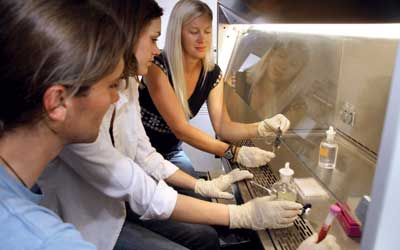Hanta Virus
In 1993, Charlie Calisher Ph.D., Colorado State University and the Center for Disease Control, set up a monitoring site for the Sin Nombre Virus (SNV) also known as hantavirus at the Old Fort property. Publications from his research include:
Natural History of Sin Nombre Virus in Western Colorado
The Relative Abundance of Deer Mice with Antibody to Sin Nombre Virus Corresponds to the Occurrence of Hantavirus Pulmonary Syndrome in Nearby Humans
Dr. Erin Lehmer, Biology Professor at Fort Lewis College continues the Hantavirus research at the Old Fort by mentoring student research projects.
Dynamics of hantavirus transmission in natural host population
In recent years, the growing incidence of human infection with animal-borne diseases, like West Nile virus and avian influenza, has focused attention on factors that could be responsible. Disturbance of wildlife habitat has been cited as one of the primary mechanisms that has lead to this increased prevalence of zoonotic disease, as animals that have been displaced from their native habitats are more likely to interact with humans, thus increasing the likelihood of human infection. As part of this research, we are focused on both immunological and ecological questions related to the transmission of Sin Nombre virus in wild deer mouse populations. Currently, we have three ongoing research projects:
- How does reproductive behavior influence immune system function in SNV infected mice?
- How does habitat disturbance alter small mammal community composition?
- How do changes in SNV prevalence in deer mice alter rates of human infection in southwestern Colorado?

Erin Lehmer shows students proper methodology in working with deer mice.
She also initiated a summer research project to study "Why is the Four Corners Region a "Hotspot" for Hantavirus Infection? An Investigation of Dynamics of Hantavirus Transmission in Natural Host Populations?".
She also was featured in a Durango Herald article about the relationship between Aspen Decline and Hantavirus.